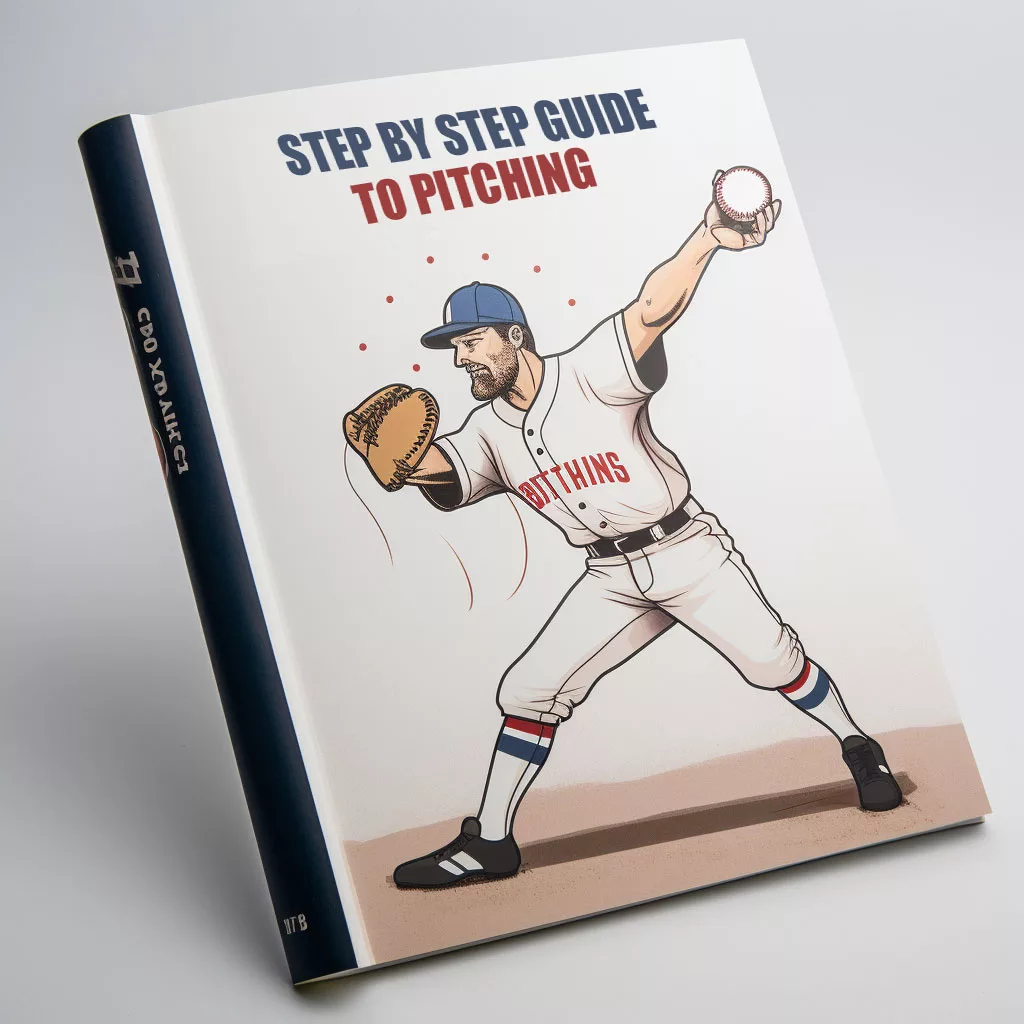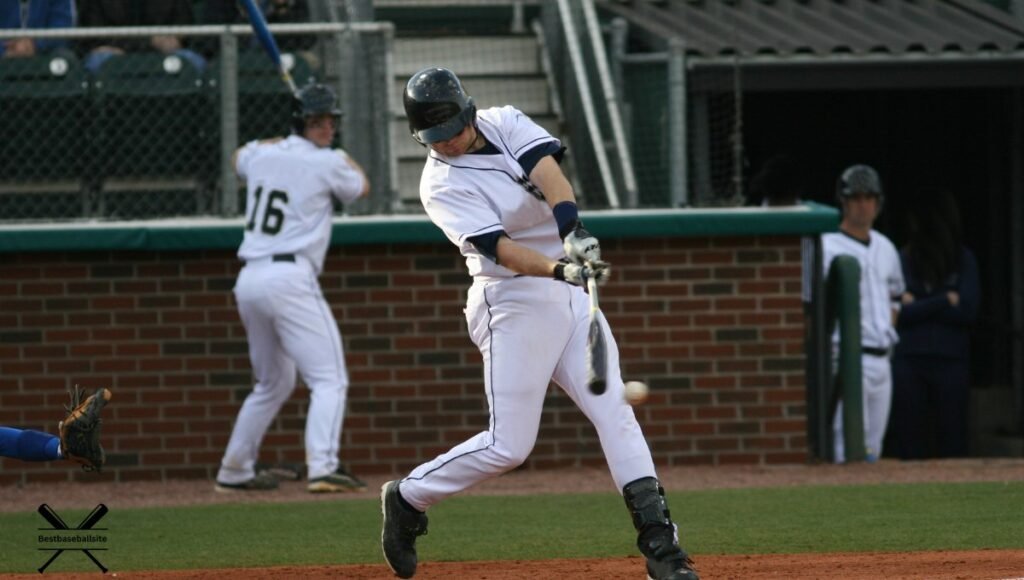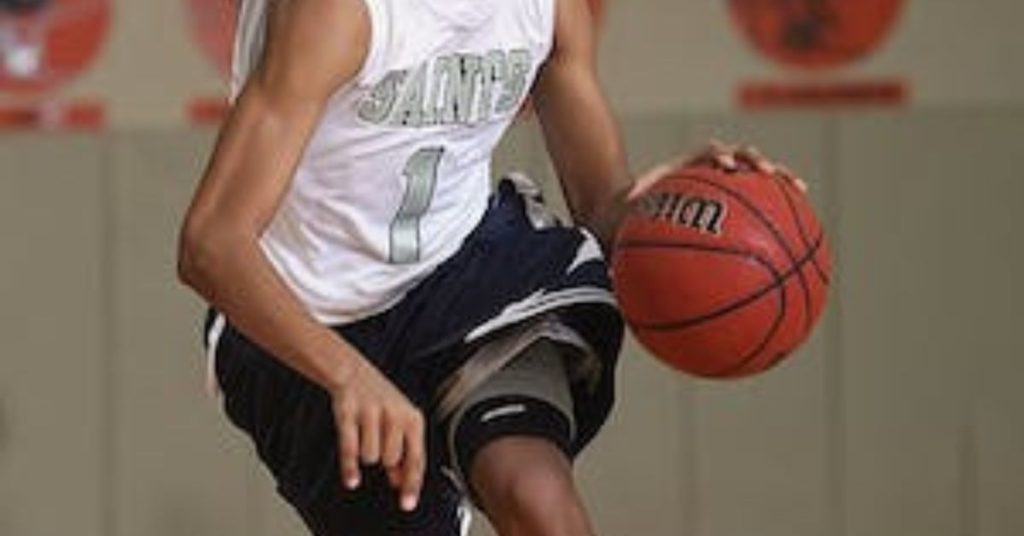Baseball pitching mechanics involve a complex sequence of motions. Perfecting these steps can enhance performance and reduce injury.
Mastering the art of pitching in baseball begins with understanding the essential components of the windup, the stride, the arm positioning, the release, and the follow-through. This step-by-step process is crucial for pitchers aiming to deliver precise, powerful throws while maintaining control and minimizing the risk of injury.
A pitcher’s technique is synonymous with their effectiveness on the mound, making the mechanics more than mere movements; they are the foundation of every successful pitch. Coaches and players alike focus on these mechanics to develop consistency, build velocity, and achieve movement on their pitches. By dissecting these mechanics into distinct steps, pitchers can refine their skills through targeted practice and adjustments, leading to improved performance and longevity in the sport.
Grasping The Basics Of Pitching
Mastering the art of pitching in baseball is like learning a new language. It’s about getting the basics right to build a solid foundation. Let’s step up to the mound and unravel the secrets of throwing strikes.
The Role Of Proper Stance
A good pitching stance sets the tone. It’s how pitchers start their motion. Your stance keeps you balanced and ready. Think of it as getting ready to jump. You want your feet shoulder-width apart. Your toe should point toward home plate. Your knees must be slightly bent. Imagine a string pulling you up from your cap. This makes sure you are tall and not slouching.
Understanding Grip Varieties
Grips are like a pitcher’s secret weapon. Each grip does something different to the ball. A four-seam fastball grip is like holding an apple; you don’t squeeze too hard. Place your fingers across the seams. Space them out a bit. This helps the ball fly straight and fast. For a curveball, twist your grip. Put your finger along a seam and your thumb underneath. This makes the ball curve or drop. Playing with grips is fun. Try them to see what happens.

Credit: www.wired.com
Perfecting The Windup
Mastering your baseball pitching starts with a flawless windup. The windup is where the pitch begins. It sets the tone for the ball’s journey. A powerful and precise windup paves the way for pitch success. Follow these steps to ensure your windup is on point.
Balancing On The Pitching Rubber
Stability is key on the pitching rubber. Begin by standing tall. Your feet should be shoulder-width apart. Align them properly with the rubber. This balance is crucial for control. It’s the foundation of your windup.
- Place the ball in your glove in front of your body.
- Keep your head up and eyes fixed on the target.
- Your hands should be close to your body, near the chest.
- Breathe deeply, focusing on maintaining a centered stance.
The Importance Of Consistent Rhythm
The rhythm in your windup creates a smooth pitch. Consistency is vital. A repeatable rhythm boosts accuracy and speed. Your body memorizes the motion, making it second nature. Practice makes perfect.
- Start the movement by lifting your lead leg.
- Keep the knee up and hold for a moment.
- Glide into the stride phase calmly and confidently.
Perfect these stages to enhance your pitching performance. A steady windup leads to a commanding pitch. Embrace the process. With dedication, watch your pitches soar.
The Transition Into The Leg Lift
The transition into the leg lift is a critical phase in baseball pitching mechanics. Proper execution can set the stage for a powerful and accurate delivery. Grasp the secrets behind a successful leg lift and watch your pitching game ascend to new heights.
Height Of The Leg Lift
The leg lift height is crucial for pitching success. Aim for a height that feels comfortable and maintains your momentum. Here’s what to consider:
- Consistency: Keep the leg lift consistent with each pitch.
- Body type: Tailor the lift to your physique.
- Momentum: Use the lift to build forward momentum.
Strike a balance between too high, which can cause imbalance, and too low, which may reduce power.
Maintaining Balance And Control
Mastery of balance and control is essential during the leg lift. Follow these steps for stability:
- Center your weight over the pivot foot.
- Keep your head aligned with your body.
- Focus your eyes on the target.
Balance is the foundation of an effective pitch, and control shapes its path. Perfect these, and you’re on your way to dominating the mound.
Executing The Stride Phase
The stride phase is a critical moment in pitching mechanics where a pitcher’s technique significantly impacts the ball’s velocity and accuracy. This phase requires harmony between power and control. Mastering the stride helps in transferring energy efficiently from the windup to the ball release. Let’s dissect this phase step by step for precision and effectiveness.
Optimizing Stride Length
The right stride length sets the tone for a successful pitch. It is the bridge between power and delivery. Balance and consistency here avoid overstressing the arm.
- Personal comfort: The stride should feel natural, not forced or stretched.
- Body height consideration: Generally, a stride length of 80-100% of the pitcher’s height gives optimal results.
- Consistency: A repeating stride fosters control over the pitch location.
- Alignment: Stride directly towards home plate ensures body alignment and pitch accuracy.
Foot Positioning At Landing
Perfect foot positioning at landing stabilizes the entire body. The landing foot anchors the pitcher and acts as a foundation for a powerful throw. Look at the details:
- Landing spot: Target a firm, not slippery, spot for landing.
- Toes first: Ensuring the toes touch down before the heel provides balance.
- Foot angle: Aim for a 45-degree angle with the toe pointing towards the plate.
- Flat foot: It enables better energy transfer and prevents rolling or twisting injuries.
| Stride Component | Goal | Effect |
|---|---|---|
| Stride Length | 80-100% of height | Maximizes power and control |
| Consistency | Repeated motion | Enhances pitch location |
| Foot Position | 45 degrees, flat | Stabilizes and prevents injuries |
Integrating these components secures a robust stride phase. It promotes success in pitching, whether the aim is speed or accuracy. Stride with confidence and see the results unfold on the diamond.
Arm Positioning And Angles
Mastering arm positioning and angles is vital in baseball pitching. It’s the foundation for throwing with power and precision. Understanding the mechanics of arm placement helps pitchers to improve their technique, reduce the risk of injury, and elevate their game.
Perfecting arm positions and angles in pitching comes down to two critical phases. These phases ensure pitchers make accurate, powerful throws every time.
High Cocking Phase
The high cocking phase is where the pitch truly begins. Pitchers need to get this right for a strong, effective throw. Here’s a step-by-step guide:
- Lift your elbow to the height of your shoulders
- Keep your forearm angled upward at about 90 degrees to the upper arm
- Make sure your wrist is firm, fingers on top of the ball
- Position the ball towards second base or slightly higher
This position prepares your arm for the kinetic sequence of a powerful pitch.
Elbow And Shoulder Alignment
Proper elbow and shoulder alignment reduces the risk of injury. Below is how to properly align them:
- Align your elbow so it’s on the same line as your shoulder
- Ensure your elbow does not drop below shoulder level
- Face your shoulder towards your target for better aim
- The pitching arm’s elbow should point upwards, creating an ‘L’ shape
Stick to these alignment tips to protect your arm and maintain top-notch pitching form.

Credit: www.topvelocity.net
The Power Of The Pitching Release
The Power of the Pitching Release is a critical aspect that determines the success of a pitch in baseball. Mastery of pitching mechanics can lead to significant velocity and accuracy. Among these, the release of the ball is a pivotal moment. Perfecting it demands understanding its timing and the intricate balance of finger pressure during the throw.
Timing Of Ball Release
Every great pitcher knows the exact moment to release the ball can make or break a pitch. Releasing too early or too late can affect the pitch’s trajectory. The goal is to let go of the ball at the optimal point in the pitching motion.
- Arm Position: Release the ball as your arm comes down in front of your body.
- Body Alignment: Ensure your shoulders, hips, and toes are in a straight line toward home plate.
- Consistency: Practice to make the release timing consistent for precision and power.
Finger Pressure And Ball Spin
The pressure your fingers apply on the ball as you release it is key to controlling the ball’s spin. A tight spin can lead to a more deceptive pitch, affecting a batter’s ability to hit it.
| Grip Type | Finger Pressure Point | Effect on Ball Spin |
|---|---|---|
| Fastball | Index and middle fingers | Backspin |
| Curveball | Index finger tip | Topspin |
| Slider | Outside edges of index and middle fingers | Tight side spin |
Adjusting the pressure on different parts of the ball allows pitchers to manipulate the pitch. Practice the right grip for each pitch to achieve the desired spin and keep hitters guessing.
Follow-through And Finishing Strong
Mastering the art of pitching in baseball requires more than just throwing the ball. It’s a symphony of movements where each step contributes to the power and accuracy of a pitch. The final flourish, known as the follow-through, is as critical as the wind-up and the release. Let’s break down step by step why this stage could make or break your pitching performance.
Importance Of Deceleration
The follow-through is not just for show; it plays a vital role in slowing down your arm safely after you’ve released the ball. This part of your pitching mechanics is crucial for preventing injuries and ensuring long-term arm health. Batters watch for a good follow-through to judge a pitcher’s control and stamina. Let’s look at why this movement is a cornerstone of a strong pitch:
- Reduces stress on the shoulder and elbow joints
- Helps in energy dissipation, avoiding abrupt stops
- Completes the kinetic chain, utilizing the body’s motion efficiently
Recovery Positioning
The way a pitcher ends their delivery is not only about effectiveness but also about preparation for the next move. A well-executed follow-through leaves you in an optimal recovery position to field any balls coming your way. Here’s how to make sure you finish strong and stay ready:
- Sustain your momentum towards home plate
- Keep your eyes on the ball, tracking it to the plate
- Land with your glove-side foot ready to respond to the play
Integrating a controlled follow-through with effective recovery positioning can mean the difference between a good pitcher and a great one. Practice these steps to ensure you’re always at the top of your game, ready to strike out batters and field efficiently.
Advanced Pitching Techniques
Advanced pitching techniques push a baseball player’s skills to the next level. Unlocking the secrets of these skills can turn good pitchers into great ones. This section dives into how to refine your pitching with advanced methods that improve off-speed pitches and boost precision and power.
Mastering Off-speed Pitches
Off-speed pitches keep hitters guessing and off balance. These pitches, slower than a fastball, require finesse and control. The key lies in the grip and release. Change-ups, curveballs, and sliders each have a unique grip. They also have a specific wrist and finger action upon release.
- Change-Up: Looser grip, back in the hand
- Curveball: Tighter grip, with a twist of the wrist
- Slider: Halfway between a fastball and curveball grip
Practice these grips and focus on the arm speed. It should match the fastball to deceive the hitter. Consistent training fine-tunes mechanics, ensuring pitchers own each off-speed pitch.
Throwing With Precision And Power
Precision and power stand as pillars of advanced pitching. Strong mechanics form the foundation. Pitchers align their body to the target, keeping eyes level. Feet position sets the stage for powerful leg drive. The arm action follows a smooth, consistent path.
| Technique | Benefit |
|---|---|
| Leg Drive | Increases velocity |
| Arm Path | Improves consistency |
| Body Alignment | Enhances accuracy |
Drills that work on leg strength and flexibility boost power. Pitchers should focus on the full motion, from initial leg lift to follow-through. Precise repetition and muscle memory lead to accurate, powerful pitches. The goal is a delivery that combines force with focused aim.
Pitching Drills For Skill Enhancement
Pitching Drills for Skill Enhancement are crucial in baseball.
They build strength, accuracy, and form.
Mastering these drills can make all the difference on the mound.
Let’s dive into specific exercises to refine your pitching mechanics.
Solo Drills For Mechanics
- Towel Drill – Perfect the throwing motion without a ball.
- Knee Drill – Focus on upper body mechanics by pitching from one knee.
- Wall Drill – Ensure a compact and efficient arm action.
- Mirror Drill – Use a mirror to check body alignment and form.
Partner Drills For Accuracy
| Drill Name | Description | Benefits |
|---|---|---|
| Catch Play | Throw back and forth, aiming for the partner’s chest. | Improves aim and builds arm strength. |
| Bullseye | Aim for a target or mitt to hone precision. | Sharpens focus and control. |
| Distance Drill | Slowly increase throwing distance with a partner. | Enhances strength and accuracy over range. |
Common Injuries And Preventive Measures
Baseball pitching demands precision, power, and skill. Yet, this athletic display can lead to injuries. To keep pitchers on the mound, understanding common injuries and ways to prevent them is key. Healthy pitching methods protect players from harm and ensure a longer career in the sport.
Avoiding Overuse Injuries
Repeated pitching can strain the arm, leading to overuse injuries. Overuse is a pitcher’s adversary, causing conditions like tendinitis and stress fractures. To avoid such injuries:
- Limit pitches per game and per week.
- Observe proper rest periods between pitching sessions.
- Adhere to pitch count guidelines based on age.
- Rotate playing positions to reduce stress on the pitching arm.
- Watch for signs of fatigue or discomfort in young pitchers.
The Role Of Proper Conditioning
Physical fitness is crucial for injury prevention. A body well-prepared for the demands of pitching is less likely to suffer from injuries. Proper conditioning includes:
| Conditioning Aspect | Benefits |
|---|---|
| Strength Training | Builds muscle to support pitching mechanics. |
| Flexibility Exercises | Increases range of motion and reduces muscle stiffness. |
| Endurance Workouts | Enhances overall stamina for sustained performance. |
Warm-up routines before pitching are essential. They prepare the body and mind for the activity ahead. Commit to a regular conditioning and stretching program tailored to pitching. Such programs can improve form and resilience, reducing the likelihood of injury.

Credit: www.amazon.com
Frequently Asked Questions Of Baseball Pitching Mechanics Step By Step
What Are The 5 Basic Steps Of Pitching?
1. Identify your target audience and decision-makers. 2. Tailor your pitch to address their specific needs and interests. 3. Create a clear, compelling message that highlights your unique value proposition. 4. Practise delivering your pitch with confidence and enthusiasm. 5.
Follow up promptly with any requested information or next steps.
What Are The Mechanics Of Pitching In Baseball?
Pitching in baseball involves a wind-up, stride, arm action, release, and follow-through. Pitchers generate power from their legs, transfer it through their torso, and release the ball towards home plate aiming for strategic locations. They use varied pitches to outsmart batters.
What Are The Phases Of The Throwing Mechanism?
The throwing mechanism consists of five phases: wind-up, stride, cocking, acceleration, and follow-through. Each phase contributes to the power and accuracy of the throw.
Conclusion
Mastering the art of baseball pitching takes focus and dedication. Each step outlined offers a building block to refine your technique. Practice consistently, and remember that good mechanics are key to reducing injury risk. Embrace the challenge, and watch your pitching skills soar to new heights.
Ready to step up to the mound?


